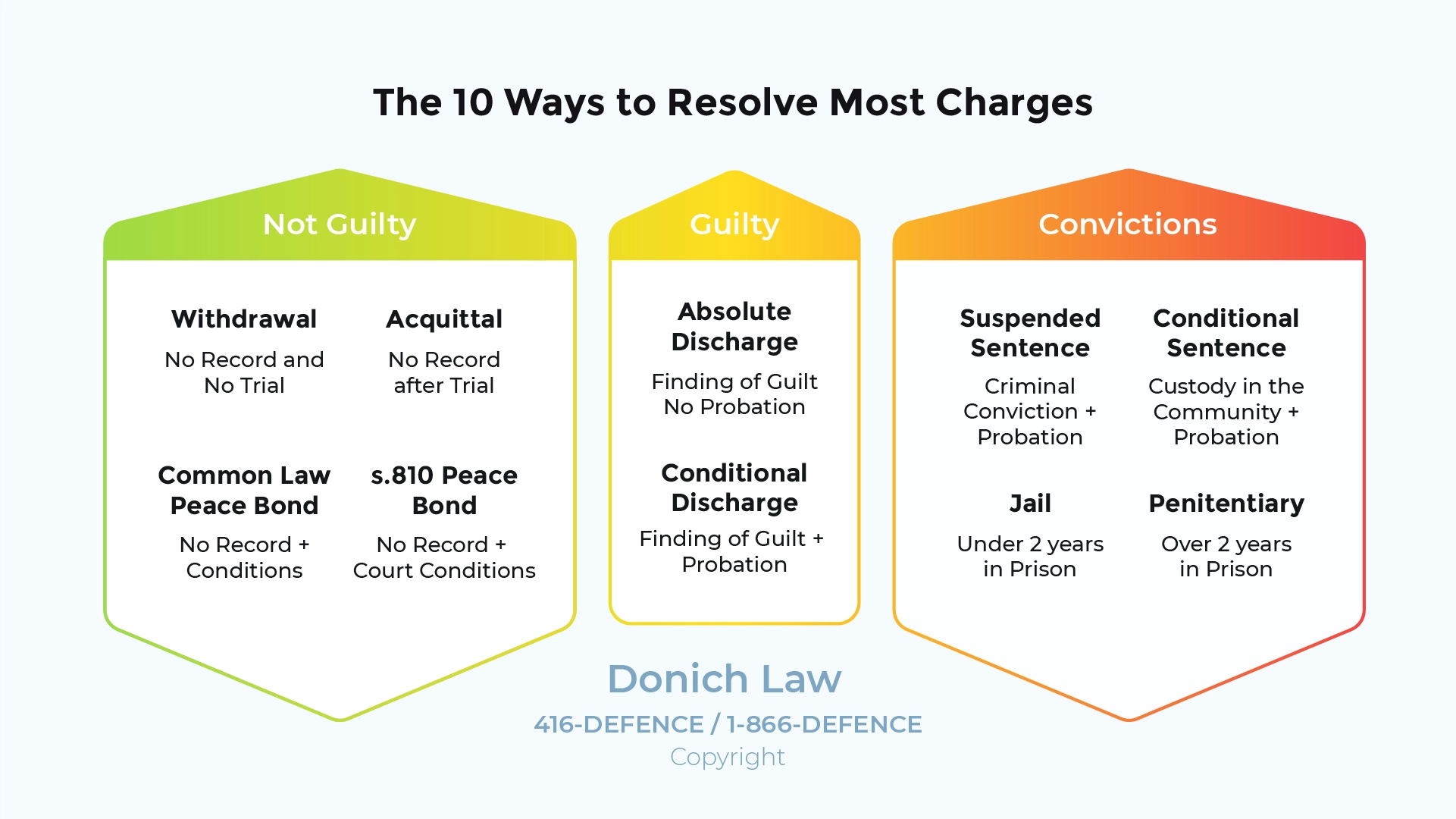
Toronto Weapons lawyer
Our Experience
The Firm frequently defends gun collectors who are facing charges of possessing prohibited weapons and allegations of careless storage of firearms and ammunition. We are one of the few businesses to have successfully defeated importing firearms charges which include mandatory minimums. The Firm has been consulted to challenge applications by law enforcement to seize a gun collection even where no criminal charges are involved, these applications can occur where the police believe the collector has mental health issues.
In April, 2018, the Firm secured a withdrawal of importing firearms, careless storage of ammunition and possession of prohibited weapons by a Toronto Fire Captain in its R. v. L.K [2018]. The accused had nearly $100,000.00 in guns and was facing 3 years in prison. Over a period of a year, the Firm was able to challenge the manner and way the search warrant was executed. The Firm worked with the guns and gangs prosecution which is a specialized unit of Crown Attorney’s in Toronto. The Firm was able to challenge some of the items, specifically whether they fell within the legal definition of a firearm. The accused was allegedly importing 80% pistol kits into Canada from the United States which formed the bases of the international investigation. The Firm was also able to save the Firefighter’s job and career without impact.
In January, 2019, the Firm resolved a careless storage of a firearm and ammunition allegation without a criminal record, where a gun collector had nearly 50 guns and thousands of rounds of ammunition, including a Smith and Wesson .357 Magnum and S.K.S. rifle sitting on a bed in its R. v. R.L. [2019]. The accused’s wife called they police after there was a break-in at the home. Officer’s arrived on scene to find rifles on the floor by the fireplace. The thieves were initially going to steal the firearms, but later left them before fleeing with personal property. Once the police arrived, they charged her husband for failing to store his firearms correctly. The Firm conducted a contested guilty plea and was able to secure the rare outcome of a conditional discharge. The Firm also saved his job where the accused had high level government security clearance.

- CP24: Civil Sexual Assault Lawsuit at St. Michael’s in Toronto.
- WUFT North Central Florida News: Generation Gunned Down Documentary.
- City News: Legal SWAT teams to keep gun criminals behind bars – premier.
- Global News: Should Canada ban Handguns?
- CBC Radio: Interview with Mayor John Tory and Jordan Donich on CBC Radio.
- CTV News National: Handgun ban supported by majority of Canadians: Nanos survey.
- Global News: How difficult is it to get a legal handgun in Canada.
- CP24: Sentencing Hearing for Chair Girl.
- CBC Radio: Toronto Gun Control should start at the U.S. Border.


Frequently Asked Questions
What is a Weapons Offence?
Weapons and firearm offences are enumerated under Part III of the Canadian Criminal Code. The Firearms Act governs the lawful possession of firearms. There are several offences related to weapons throughout the Code. For example, section 88 of the Criminal Code enumerates possession of a weapon for a dangerous purpose; section 267 and section 270 to 270.02 relates to assault and assaulting a peace officer with a weapon; section 272(1) enumerates sexual assault with a weapon.
Firearms possession offences are offences related to the possession and ownership of a firearm. The unsafe storage and handling of a firearm is enumerated under section 86(1) of the Criminal Code. Any contravention of firearm storage regulations is an offence under section 86(2). If a person is carrying a concealed weapon, they have committed an offence under section 90. The unauthorized possession of a firearm (section 91) and the possession of an unauthorized firearm (section 92) both relate to regulations in the Firearms Act. If a person possesses a firearm at an unauthorized place (section 93) or does not have authorization to possess a weapon in a motor vehicle (section 94), they may be charged with an offence. Section 95 of the Criminal Code talks about the possession of a restricted or prohibited firearm, while section 96 prohibits the possession of a weapon obtained by the commission of an offence.
Weapons trafficking is illegal, and so is the unauthorized transfer of a firearm. Making an automatic firearm is illegal, exporting and importing firearms cannot be done without authorization, and a failure to report a lost or recovered restricted/prohibited firearm is a crime. Destruction or tampering with a restricted/prohibited firearm is an offence. Finally, if a person is on a weapons prohibition order, the possession of a weapon contrary to an order is enumerated under section 117.01.
If a person improperly uses a firearm, they can also be charged with an offence. Most of these offences concern the use of a firearm in commission of an offence, such as sexual assault, assault, attempted murder, kidnapping, robbery, etc.
How Criminal Charges can be Resolved in Canada

What is the Definition of “Weapon”?
Several offences in the Criminal Code relate to the use of a weapon. Weapon, defined in section 2 of the Criminal Code, describes any thing used, designed to be used, or intended for use in causing death or injury to others, or that can be used to threat or intimidate another person. For example, a bike lock, if used as a threat, can be defined as a weapon by the Court. Weapons include both restricted, non-restricted, prohibited, and exempted firearms. Weapons do not include prohibited devices or ammunition.
What is the Definition of “Firearm”?
Section 2 of the Criminal Code defines firearm as a type of weapon. A firearm is a barrelled weapon from which any bullet, shot, or projectile can be launched from and can cause serious bodily injury or death to a person. This also includes the frame of the weapon, the receiver of a weapon, or anything that can be adapted for use as a firearm.
Regardless of any intention the holder might have, a firearm is a weapon. Firearms are classified into two types: long guns and handguns. Discharging a firearm is not necessarily the use of a firearm. A firearm can be used in many ways, as it can physically strike another person. The pointing of a firearm at another person, holding a firearm to intimidate, or brandishing a firearm can all be defined as the “use” of a firearm.
Consequences of a Criminal Record
Will I Go to Jail for a Weapons Offence in Toronto?
Weapons offences, in comparison to other offences, may be more likely to result in a longer sentence. Firearm offences are treated very seriously in Canada, and the possession of firearms is strictly regulated. The simple unauthorized possession of any firearm is dangerous, as death and injury have a high probability of occurring around firearms. In Ontario, serious firearms offences may, and often do, result in a penitentiary sentence.
For example, section 91 details the unauthorized possession of a firearm. Section 91 is a hybrid offence, meaning that the Crown can elect summarily or by indictment. An indicted offence is often more serious than one summarily elected. Section 91 has no mandatory minimums. If proceeded by summary election, the offender may face two years less a day in jail and/or a $5,000 fine. If the Crowns proceeded by indictment, the offender may face up to five years of incarceration.
What are Some Weapons-Related Offences?
The offence of possession of a weapon for a dangerous purpose is listed under section 88 of the Criminal Code. It is a hybrid offence, meaning the Crown can elect by indictment or summarily. If proceeded by summary election, the offender may be subject to two years less a day in jail and/or a $5,000 fine. If proceeded by indictment, the offender may be liable to ten years incarceration.
Many offences, when committed in conjunction with the ownership of a weapon, become an entirely separate offence with different sentencing principles and ranges. For example, simple assault is defined under section 265 of the Criminal Code. Section 267(a) enumerates assault with a weapon. If the Crown elects summarily, assault with a weapon may have a maximum penalty of 18 months incarceration. If elected by indictment, assault with a weapon has a maximum penalty of 10 years incarceration. If the offender was convicted for a second time in relation to intimate partner violence, the offence of assault with a weapon is indictable, and they may be subject to a maximum penalty of 14 years incarceration.
Law Newbie is a free AI research assistant that can help you safely answer questions about criminal law.
Recent Cases
R. v. Collins, 2023 ONSC 2423
In the Ontario Superior Court of Justice case of R. v. Collins, the accused was charged with multiple drug and gun related charges, resulting in 11-counts. The accused applied to have a gun-related charge stayed due to entrapment. The accused was alleged to have sold cocaine and fentanyl on five occasions to an undercover police officer, as well as offering to transfer a firearm to them. The undercover police officer’s original plan was to buy drugs from the accused, but the investigation expanded to drugs and guns. The defendant attempted to sell two firearms to the undercover officer, priced between $4,000 to $6,000. There were multiple exchanges and text messages between the officer and the accused.
The defence submitted that the police entrapped the accused, on the grounds that the undercover officer had made persistent and numerous requests to buy the guns and enticed the accused with the reward from the sale. However, the Court found that the accused was the first to offer guns to sell and show the officer two photos of firearms. The Court found that “the police conduct in this case would not have induced the average person in the position of the accused, into committing the crime.” [para 54]. The application was dismissed, as there was no entrapment found.
R. v Manzo, 2023 ONSC 2458
The accused was charged with possession of firearm for a purpose dangerous to the public peace, using semi-automatic rifle while committing the offence of mischief; using semi-automatic rifle in a careless manner; and committing mischief by damaging a truck. The question in the Ontario Superior Court of Justice case of R. v. Manzo, was whether or not the accused did commit the crime. The Crown must prove beyond a reasonable doubt that the accused committed mischief. Witness testimony was admitted into evidence. The witnesses were two construction workers who drove their boss’ truck to do work at a dock. While working, they heard several gunshot-like noises, and upon their return, found three bullet holes in their boss’ truck. The accused was found to be suspicious near the boss’ home and was arrested by the police with weapons in the car.
The Court admitted expert evidence during trial. Unique and different microscopic markings are made on the casings of bullets upon each firing of the rifle. Forensic scientists discovered that the shell casings of the accused’s weapons matched the ones at the scene. From the evidence, the judge found that the accused had fired the firearm, committed mischief, and did so carelessly and without lawful excuse, damaging the truck resulting in over $5,000 in damage The Crown has met their onus, and the accused was found guilty on all three counts.
R. v Robinson, 2023 ONSC 285
In the Ontario Superior Court of Justice case of R. v. Robinson, the accused is charged with possession of a loaded and prohibited firearm under ss. 91(3) and 95(2) of the Criminal Code. There were also charges of breach of recognizance. These charges concern an attempted sale of a firearm, and the accused is the one alleged to be the potential purchaser of the firearm. As a part of Project Camden, a dealer in controlled substances and firearms was being watched. The dealer and the accused met at the accused home while the police were following the dealer. A takedown ensued.
No DNA or fingerprints were recovered from the firearm. The firearm was also a Taurus Model PT140 Millennium G2 pistol, a prohibited firearm with a single cartridge inside. The accused was not legally permitted to possess a firearm or ammunition. The evidence demonstrated that the accused had made arrangements to bring the firearm into his house. The Crown argued that by doing so, the accused had exercised control over the property to create either constructive or joint possession. However, the Court found that the transaction was not completed at the time, and cannot constitute possession of a loaded and prohibited firearm. Instead, the accused is charged and convicted with section 24(1) of the Criminal Code, the attempt to possess a loaded and prohibited firearm.













